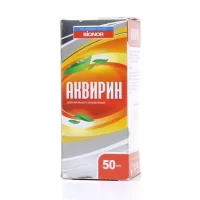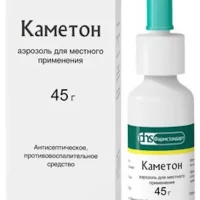Description
Maxicold Lor Tabs Pharmacodynamics
Flurbiprofen is derivative of propionic acid from group of non-steroidal anti-inflammatory drugs (NSAIDs) and has significant analgesic, anti-inflammatory and antipyretic effect due to inhibition of cyclooxygenase-1 (COX-1) and cyclooxygenase-2 (COX-2), with some selectivity towards COX-1, resulting in decrease of prostaglandins production – pain, inflammation and hyperthermic reaction mediators.
The drug has a local anesthetic and anti-inflammatory effect on the mucous membrane of the mouth and throat: it reduces swelling, difficulty in swallowing, pain and irritation in the throat.
Cetylpyridinium chloride is an antiseptic from the group of quaternary ammonium compounds, it has antimicrobial, antifungal and virulicidal action. Combined use of flurbiprofen and cetylpyridinium chloride allows achieving a higher effectiveness, in comparison with cetylpyridinium chloride, for sore throat caused by infections of the upper respiratory tract. More pronounced effect of the combination is manifested as a more rapid reduction in the manifestations of tonsillopharyngitis, as well as a more rapid and pronounced reduction in the intensity of pain in the throat, within 1 hour and 2 hours after application of the drug.
Indications
As a symptomatic agent for the relief of sore throat in infectious-inflammatory diseases of the mouth and throat.
Contraindications
– Hypersensitivity to the components of the drug;
– History of hypersensitivity reactions (bronchial asthma, bronchospasm, rhinitis, Quincke’s edema, urticaria, recurrent nasal or paranasal sinus polyposis) in response to use of acetylsalicylic acid or other NSAIDs;
– gastrointestinal (GI) erosive-ulcer disease (including gastric and duodenal ulcer, Crohn’s disease, ulcerative colitis) or ulcer bleeding in the acute phase or in the history (two or more confirmed episodes of peptic ulcer disease or ulcer bleeding);
– bleeding or perforation of a peptic ulcer in a history, provoked by the use of NSAIDs;
– hemophilia and other disorders of blood clotting (including hypocoagulation), hemorrhagic diathesis;
– severe hepatic insufficiency or active liver disease;
– severe renal insufficiency (creatinine clearance (CK) < 30 ml/min);
– decompensated heart failure;
– period after coronary artery bypass grafting;
– pregnancy (III trimester);
– Breast-feeding period;
– confirmed hyperkalemia;
– Glucose-6-phosphate dehydrogenase deficiency;
– childhood under 18 years of age (due to lack of experience in medical use in children).
If you have one or more of the above diseases and conditions, you should consult a physician before starting this medicine.
Dosage and administration.
- Adults – 1 tablet every 3-6 hours. The tablets should be slowly dissolved until completely dissolved.
- The tablets should not be taken immediately before or during a meal.
- The maximum daily dose is 5 tablets.
- Duration of use is not more than 3 days.
- If it is necessary to continue taking the drug for more than 3 days (if pain syndrome persists) you should consult your doctor.
- Use the drug only according to those indications, that method of administration and in those doses specified in the instructions.





